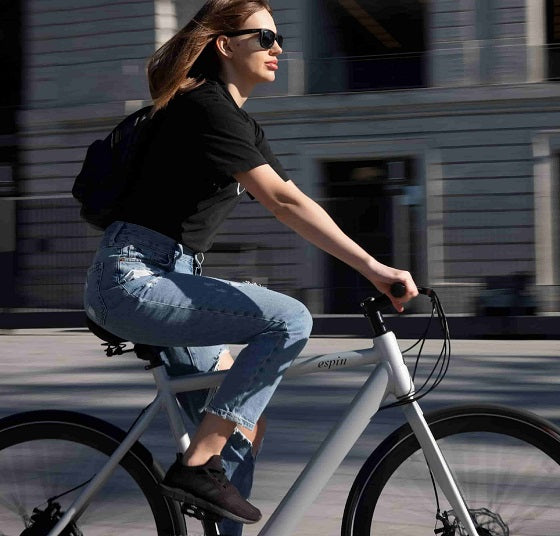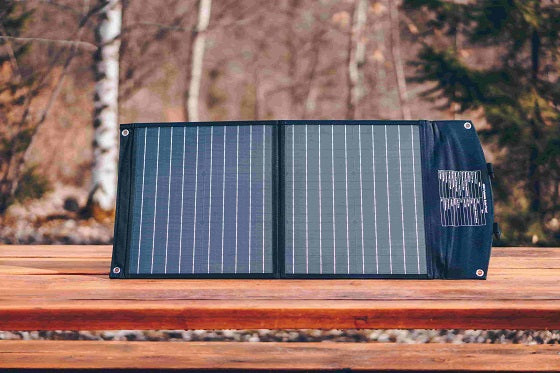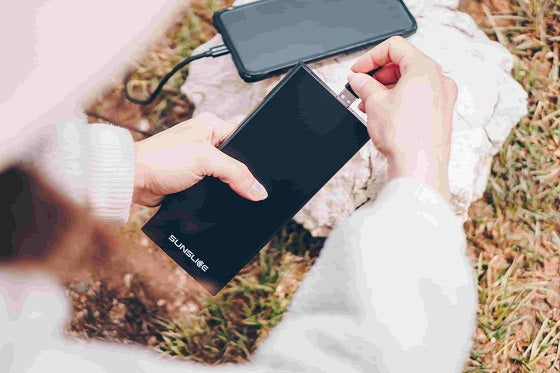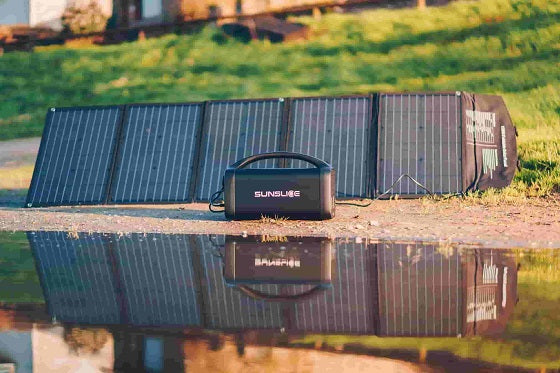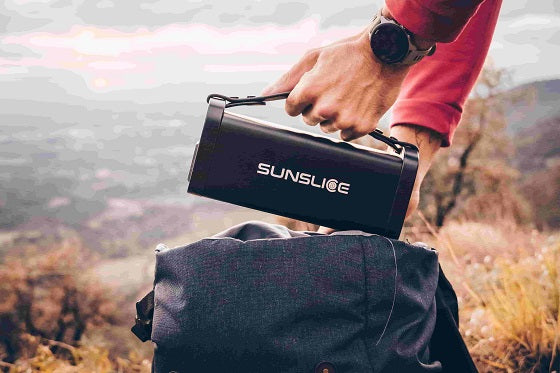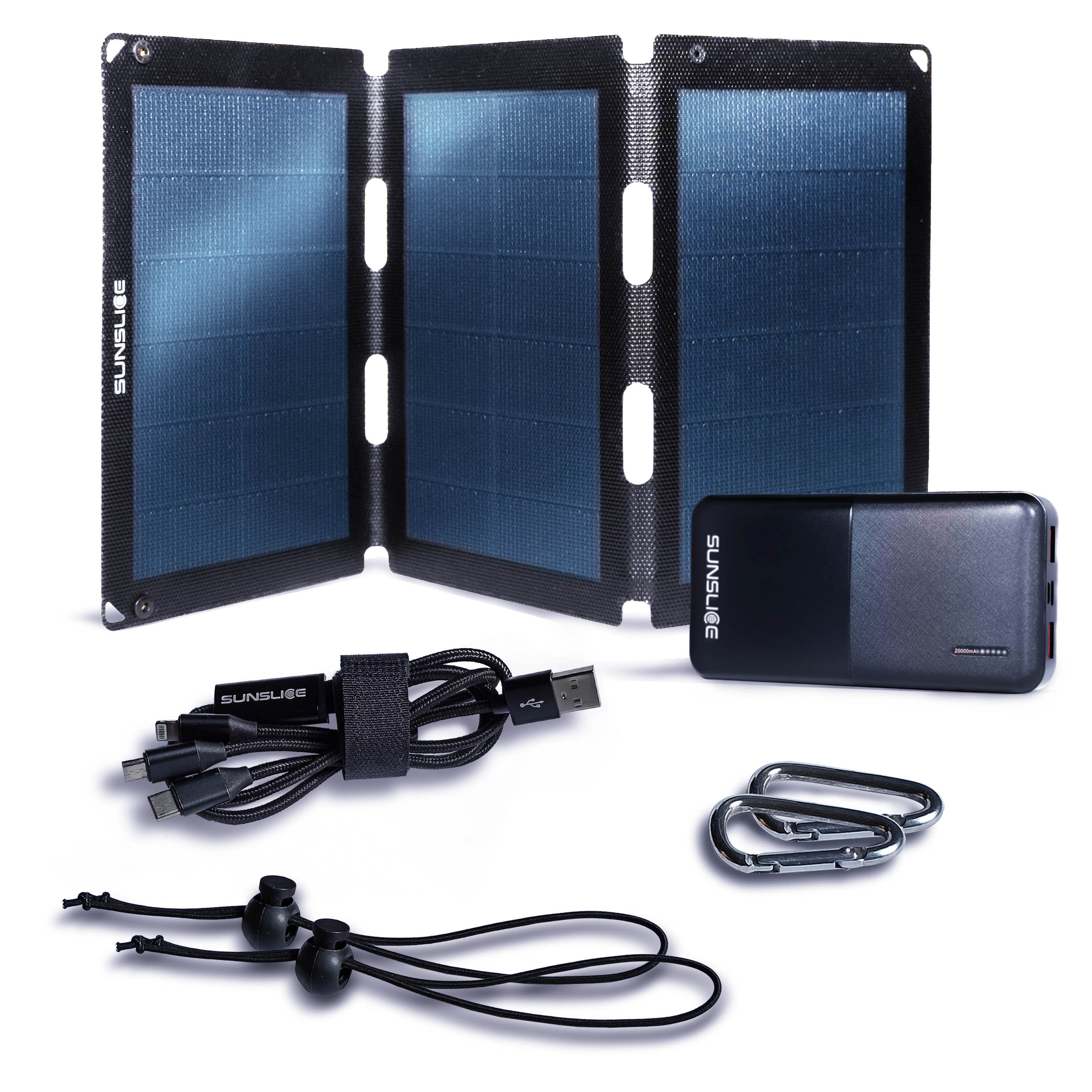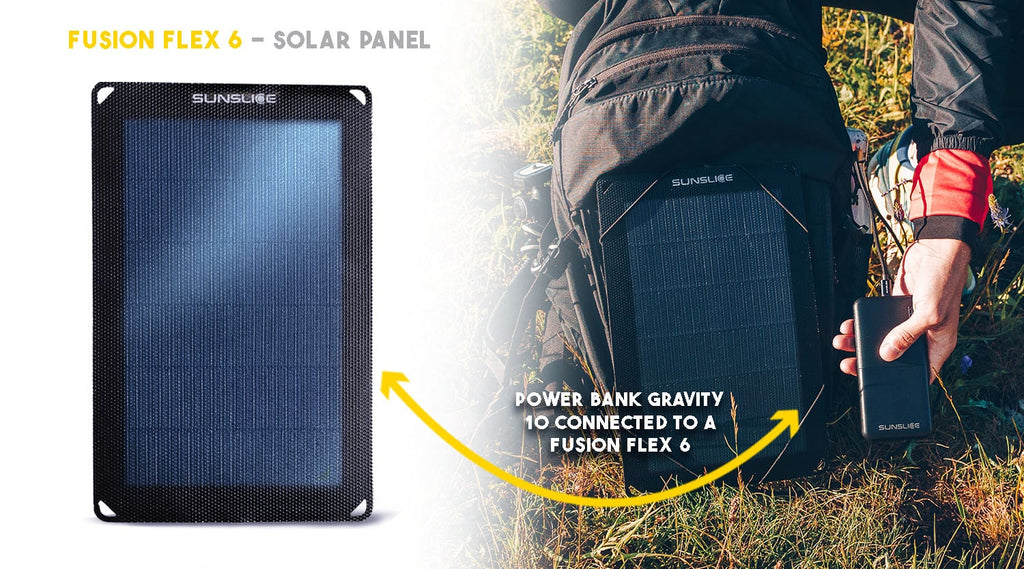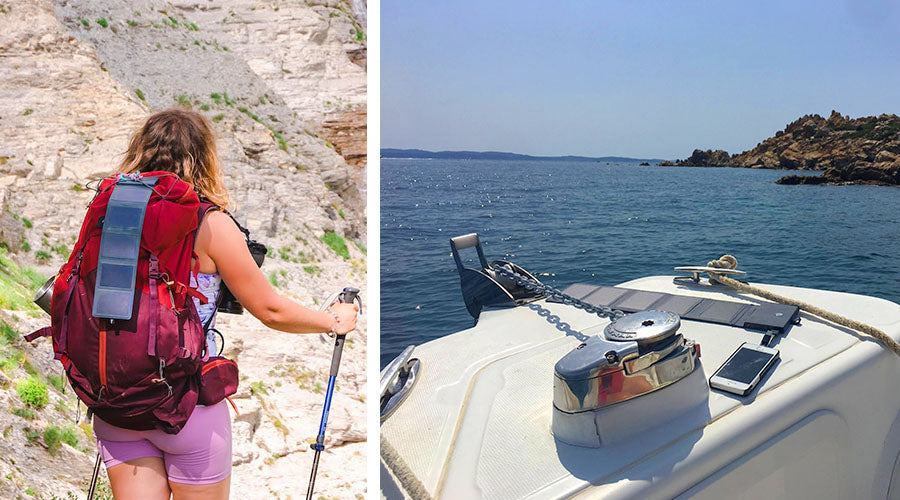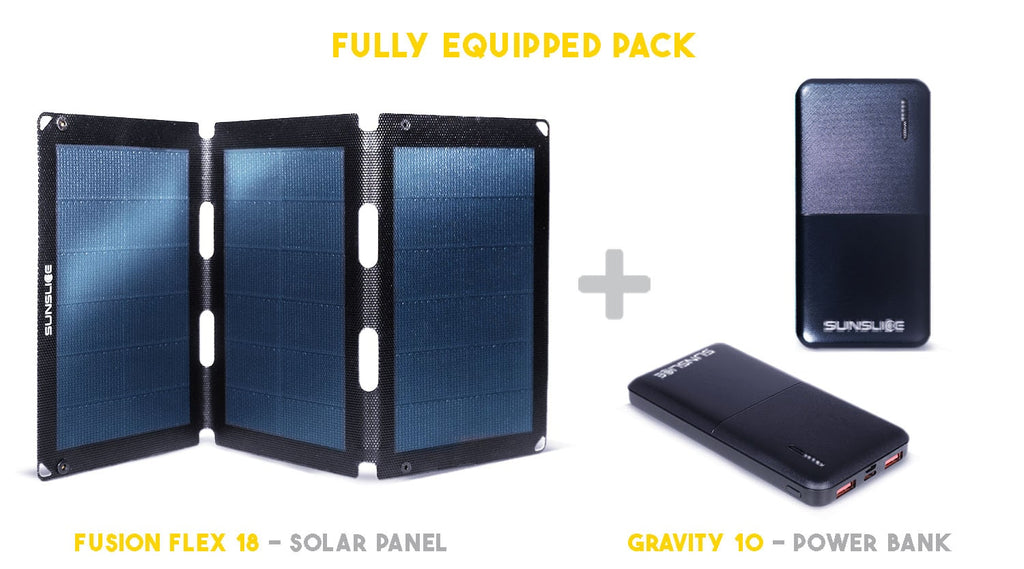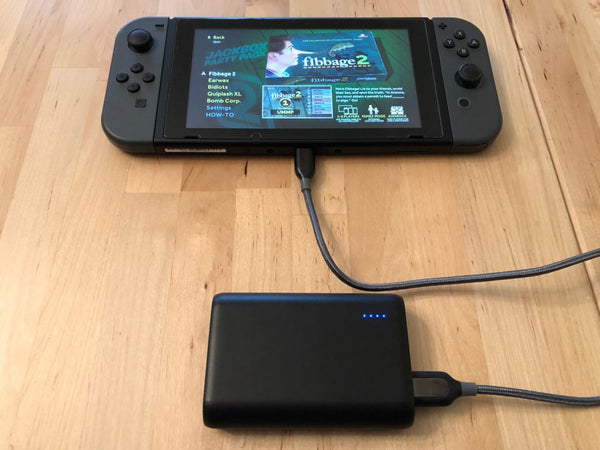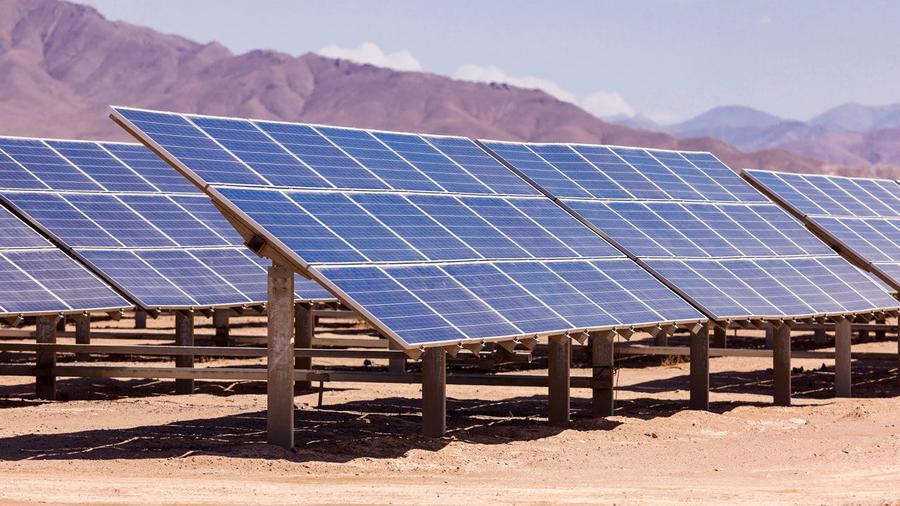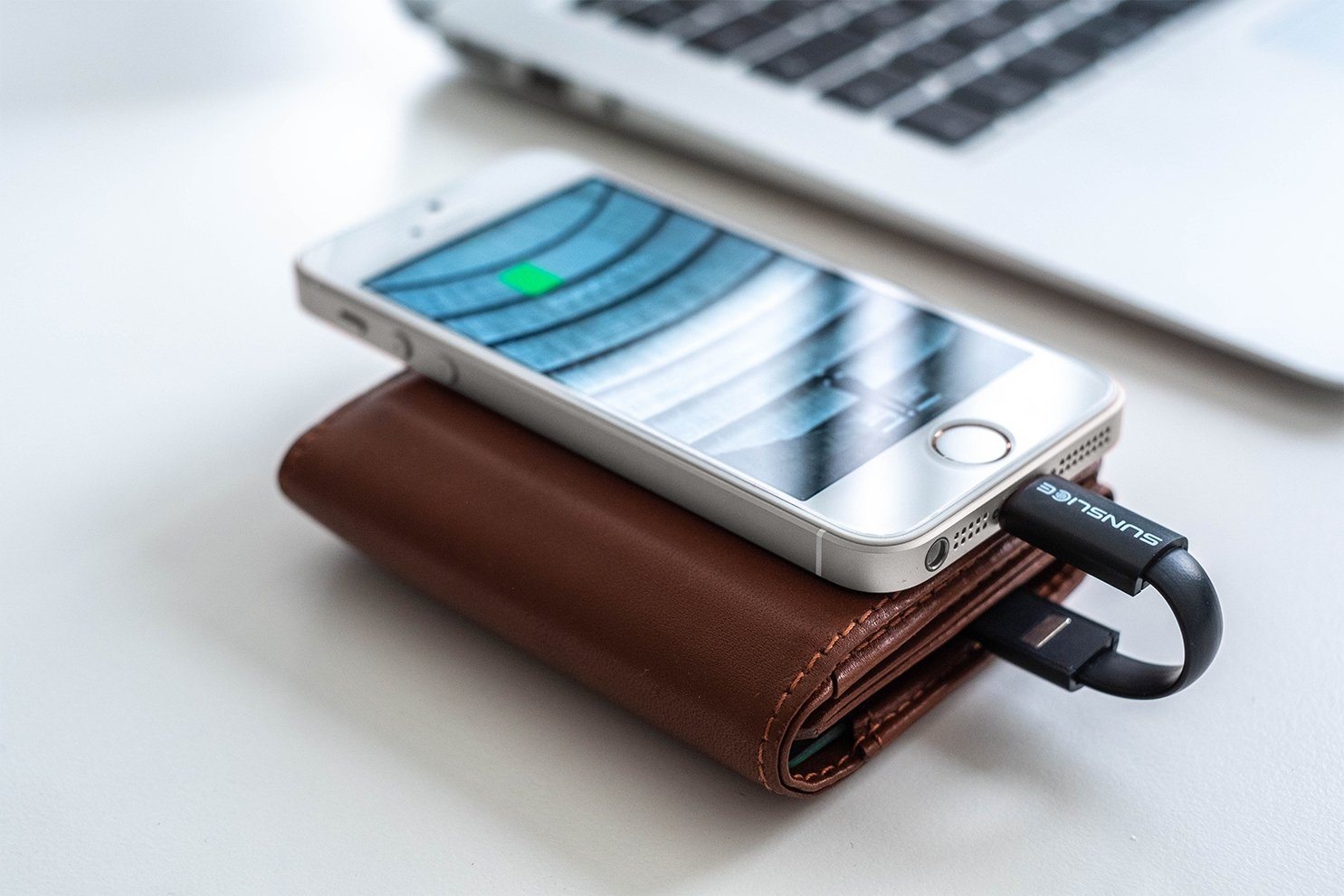Many of you contact us to get our opinion on the various solar chargers and solar batteries we offer on our site.
We have thus decided to write a specialized guide on solar and non-solar chargers to guide you through the wide and thoughtful choice we offer.
Each charger developed and marketed by Sunslice has been thought through in terms of use, ergonomics and practicality. Each Sunslice charger has its own interest and there is usually always an ideal solar charger for every use.
The aesthetic aspect of the products is an additional asset that we wanted to bring to our products, however, without compromising on the main features of the products.
The best advice we can give you in this process of thinking about and comparing solar chargers: put the charger and its features in the context of how you will use it each time.
In our quest to bring energy anywhere ("Energy Anywhere") and in the smartest way possible, we don't just offer solar chargers (Photon, Electron, Fusion Collection, Zenith), but also powerbanks or external batteries (Gravity collection), a hybrid powerbank-charger (Hadron), a phone holder with built-in battery (Cyclotron), charging cables USB and accessories of all kinds. This article also includes our powerbanks in the comparisons as these are an integral part of the solar charger universe.
1. Solar panel or portable solar battery.
In the "portable solar charger" category, a distinction is made between solar panels and portable solar batteries (or powerbanks).
In the case of the solar panel such as the Fusion Flex 12, we are talking about a single solar panel, which does not directly integrate a battery. The portable solar battery is a solar panel that integrates, within the same product, a powerbank, such as the Photon. It can also be seen as a powerbank that has one or more solar panels.
The solar panel can be connected to an external battery (classic powerbank) with a USB cable in order to store the energy generated by the sun through the solar panel and thus obtain similar functionality to a solar battery. However, there are still important differences between the two types of solar chargers to consider and these are detailed below.
The Photon and Electron are thus portable solar batteries while the Fusion collection features portable solar panels. The external batteries in the Gravity collection can be combined with the Fusion to provide energy storage.
- Benefits of a battery built into a solar charger
Storing solar energy at all times
Having a built-in battery, the solar powerbank will automatically store and store the energy generated by the sun. Therefore, it is possible to let your solar powerbank charge in the sun (its built-in battery will charge) and then charge your devices when the sun is gone (its built-in charged battery will discharge into the device you want to charge).
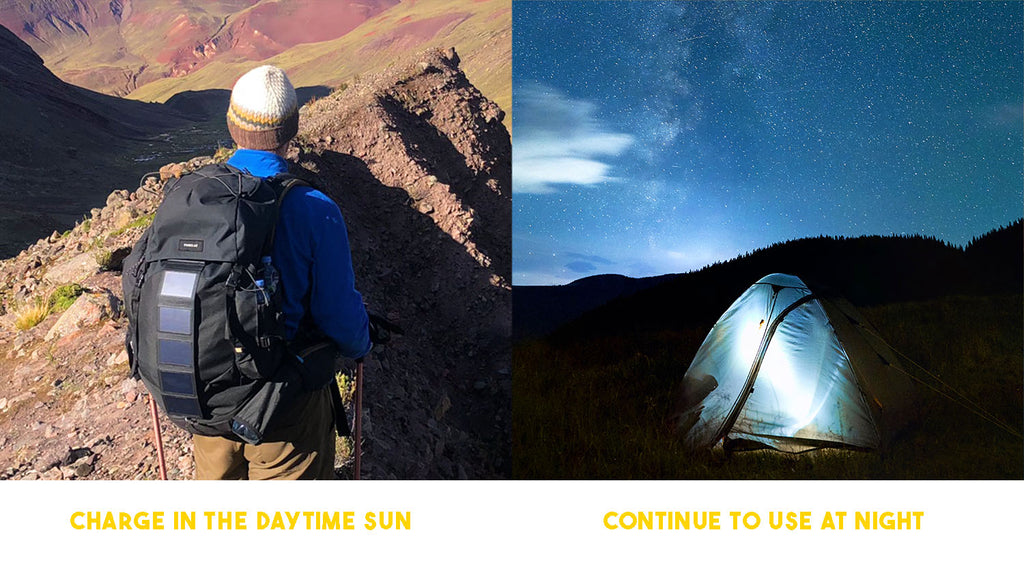
Most convenient solar charger
The all-in-1 solution is ideal in the case of quick and easy use of the solar battery. This is because there is no need to buy an additional external battery to store energy, nor do you have to think about connecting it to the solar panel (see section Advantage of a solar panel with external battery)
Better solar performance
In the case of Sunslice Photon and Electron solar batteries, the electronic characteristics of their internal battery are specifically matched to the electronic characteristics of their solar cells. These characteristics are mainly the input and output voltage of the battery and the solar cells respectively. What does this change? It optimizes and therefore increases the charging speed in the sun by significantly reducing (up to 20%) the losses related to the energy transfer between the solar part and the Photon's battery.
In the case of a solar panel (Fusion collection), the solar panel will need to be connected via a USB cable to an external battery in order to store the energy produced by the solar panel in the sun. This device automatically creates a voltage drop and thus causes a power loss in the energy transfer. Our solar panels have been designed to minimize this power loss.
Solar panels are designed to minimize this power loss.
Design in line with product use
One of the implicit advantages of a battery built into the solar charger is that the battery capacity has been sized in accordance with the solar power delivered by the solar panels and the product usage.
In the case of the Photon, the main goal of its user is to find a compact and efficient solution to help them keep their portable electronic devices charged while hiking.
So we propose the smallest and lightest possible solar charger that can charge a phone in the sun at a speed comparable to a standard outlet.
The Photon was therefore designed by finding an ideal compromise between the size of the solar panels (thus the speed of charging in the sun) and the capacity of the battery to ensure a compact and light total size and weight.
The Electron, on the other hand, has been thought out to allow for more capacity and faster charging. The size and weight of the product have therefore evolved proportionally, while keeping an ideal compromise between power, capacity, weight and size of the solar charger.
Such an ideal compromise is rarely possible in the case of solar panels coupled with external batteries.
- Benefits of a solar panel with external battery
Solar panels also have advantages. The main advantages are described below.
Small and lightweight solar panel
In cases where you do not need to store solar energy in an external battery, the weight and size of your solar charger will decrease significantly by using a simple solar panel, without a battery.

In case you are already equipped with an external battery with very specific features such as charging a laptop for example, there is no need to burden yourself, in weight and size, with the integrated battery of a solar powerbank that will no longer have its main interest of energy storage. A simple solar panel is enough in this case because your external battery will allow the storage of the solar energy produced by the panel.
Durable solar charger
The durability of your solar charger will also be helped by choosing a simple solar panel without a built-in battery. The ability to keep the solar panel and replace only the battery when necessary makes this solar charger solution more environmentally friendly. Indeed, situations such as a failing battery or a battery that loses capacity are phenomena that can occur over time. One may also want to change batteries simply to keep up with evolutions in technology.

With this in mind, the Electron is a durable solar battery. It has been intelligently designed and gives us the possibility to replace the charger battery in the event that it fails. Unlike the vast majority of solar batteries that are thrown away in the case of a failing internal battery.
cheap solar panel
When considering buying the solar panel alone, the cost / Watts of solar power will be significantly lower. However, if you consider the need to purchase an external powerbank as well as a USB cable in addition to the solar panel, depending on the panel-battery-cable combination, then the total prices of the combinations can easily surpass those of Photons and Electron solar powerbanks. If you already own a powerbank and a USB cable, buying a simple solar panel can easily reduce the cost of your purchase. Be careful, however, to ensure that the powerbank you have is compatible (usually it will be) as well as suitable for the use you intend to make of it (capacity, weight, size, sturdiness etc.).
2. How to choose your portable solar charger.
- Context of using the solar charger
As mentioned at the beginning of this article, the most important thing is to choose a solar charger that is suitable for the use you will make of it. This also involves factors of usage conditions as described below.
- Can I charge my phone with a solar charger when it's cloudy?
Yes, but it can take much longer than expected.
Depending on the sunlight conditions in the area(s) you'll be traveling, the total area of the solar panels as well as the battery capacity (built-in or external) will vary.
In fact, don't overlook the considerable loss of solar power in cloudy conditions. A typical day in the city with a constant cloudy film can quickly cause solar power production to drop by 50% to 80%.

Cloudy regions
In the case of regions with low sunlight, it has two options, depending on your range condition.
- If you're going fully self-sufficient without the ability to connect to the power grid for several days, it's best to take a large solar panel. Foldable solar chargers allow for a large surface area when deployed.
An "oversized" solar panel will produce "too much energy" when the sun is shining, but will mostly allow that in cloudy conditions, the reduced energy production due to clouds will be as much as possible for your use.
Going with a solar panel sized optimally for ideal sunlight conditions, the reduced charge in cloudy conditions will often not allow for proper or even minimal charging of your portable devices. The Fusion Flex 18 is the largest solar panel offered by Sunslice and will generally allow you to continue to charge your electronics properly when it is cloudy. In direct sunlight, its dual USB port also allows you to quickly charge 2 devices at the same time. Check it out here.
- If you are going on a hike with the possibility of connecting to the power grid every day, or even 2-3 days, it may be better to favor the capacity of the powerbank (built-in or external) over the solar power that will be greatly reduced due to the little sunlight. Indeed, an important battery capacity will allow to travel from a point with possibility of recharging on mains to another. The solar function becoming rather a solution of slow recharging throughout the journey and a backup if necessary.
The more important capacity of the battery will have a consequent impact on the weight to carry. A fair compromise is then to be found between the capacity needed to charge all the necessary devices from one point to another and the share of risk to be taken at the level of solar recharging, mainly related to the sunshine during the trip.
In such circumstances, we recommend getting a Gravity 20 (capacity: 20,000 mAh, weight: 350g, triple USB: can charge 3 devices at the same time) and a Fusion Flex 12 (315g). The Fusion Flex 18 weighs "only" 100 grams more for a nearly identical folded size and allows for a safer solution. The Electron is also an ideal weight-size-battery-capacity compromise.
Sunny regions
In the case of regions with high sunlight levels,there are also several options.
- If your ultimate goal is to minimize weight and bulk and it's mainly to charge smartphone, connected watch, iPod, GoPro: we highly recommend the Photon.
It's unbeatable in weight and size, charges quickly in the sun (3 to 4 hours of charging for a full charge of a standard phone) and stores the energy produced in its internal battery. Easy and convenient, you clip it to your backpack and the Photon will charge throughout the day without even realizing it.
The small portable solar panel Fusion Flex 6 coupled with a Gravity 5 or 10, is a slightly bulkier and heavier solution, but less expensive than the Photon. If you already have a powerbank and plan to use it on your hikes, combining it with a Fusion Flex 6 will be ideal.
- If you have more room in your bag or in the car or camper and weight matters less, the Fusion Flex 12 or Fusion Flex 18 and Gravity 10 or Gravity 20 are ideal. The Fusion Flex 12s charge one device at a time quickly, but also allow for slower charging of two devices at once thanks to their dual USB ports. The Fusion Flex 18 allows fast charging of two devices simultaneously. A larger capacity external battery allows for a greater charging advance when you've had a chance to recharge your external battery (on AC, for example) before departure. The risk will be even lower in the event that the sun is not shining for longer than expected. The impact on the weight remains to be considered, however.
- Charge my solar charger during the day, charge my smartphone at night
In the case where the use of solar energy is mainly to charge portable devices at night, it is essential to have either a solar battery which therefore incorporates a powerbank as described earlier, or a solar panel with an external battery.
- CIGS or Sunpower® solar technology
There are many solar technologies and each of these technologies has its own particular interest. We have written an article "What is the best solar technology for my portable solar charger?" in which we describe at length the specifics of each photovoltaic technology.
To summarize, there are three photovoltaic technologies that are mainly used now: the Polycrystalline Silicon, the Monocrystalline Silicon (mainly Sunpower® and LG®), the Flexible CGI.
Polly-crystalline silicon
The only advantage of polly-crystalline is that it has a beneficial price. It is very brittle and has a very low efficiency. It finds real interest when you have very large areas (hundreds of square meters) to cover. Polly-crystalline is therefore, in our opinion, not interesting in the case of portable solar chargers, although many cheap manufacturers offer them. A word of advice: avoid polly-crystalline portable solar chargers, even if the manufacturer advertises supposedly attractive performance.

Monocrystalline Silicon
Monocrystalline Silicon is the most widely used technology by manufacturers of good quality solar chargers. Famous brands such as Sunpower® and LG® have established themselves in the photovoltaic market by leveraging and significantly improving these solar technologies. We now get efficiencies of up to 21%, the best on the market accessible to the "general public." Although more expensive than polly-crystalline, it has nearly double the efficiency and far greater durability over time. Sunpower® and LG® also use back-contact technology, which gives them a very nice, clean look.

The Photon and The Electron are both equipped with Sunpower® cells which, through extreme optimized design, gives them the best solar power/size ratio.
CIGS
The use of CIGS solar technology allows for extreme solar panel flexibility and solar power generation efficiency nearly equal to Sunpower® technology. Being a newer technology, Sunslice is among the first brands to offer CIGS solar chargers. More expensive than mono-crystalline, its flexibility and strength give it a major advantage for hikers: the panels can be easily attached anywhere, are not likely to crack when carried in the bottom of a pack, and are virtually unbreakable. The panels are also extremely water resistant. And finally, despite a slightly lower efficiency than the mono-crystalline Supower® and LG®, CIGS panels produce longer over a day because they are more sensitive to low light. Therefore, they will start producing earlier in the morning and finish producing energy later in the evening.

The Fusion Flex collection is equipped with CIGS solar cells, making them flexible, unbreakable, ultralight, and high-performance at the same time!

3. What devices can you charge with a solar charger
Portable solar chargers can charge a wide range of electronic devices, depending on their characteristics such as solar power, internal or external battery, battery capacity, battery output power etc. Here, according to the different portable solar panels and portable solar battery, the devices that can be charged. This list is obviously not exhaustive.
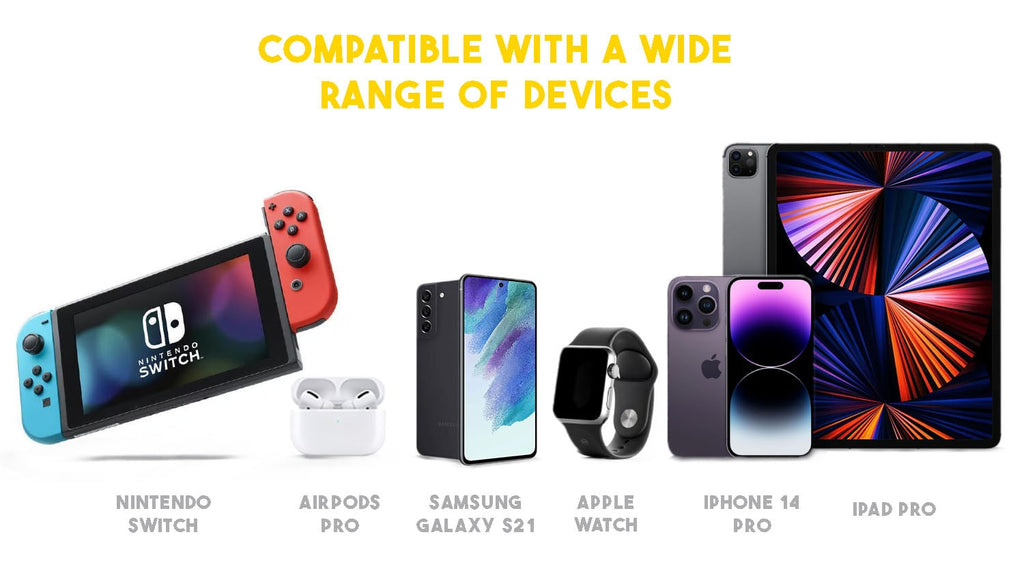
The big advantage of solar chargers, is that they have unlimited solar charging capacity, when available. The main questions to ask yourself are then the desired charging speed, the storage capacity (if built-in battery required) of the solar charger needed for the number of charges of the devices you want to charge, and finally the compromise you want to make between the size, weight, capacity, charging speed and price of the charger you will take on your hikes, treks, escapades of all kinds. In some cases, a solar charger is not necessary and a classic powerbank (such as the Gravity range of external batteries) is sufficient. Feel free to reread the previous sections to help you in your thinking.
If the device you want to charge is not listed, feel free to check out our FAQ or contact us via our contact.
- Charging your smartphone with a solar charger or solar battery
The majority of solar chargers, with or without a built-in battery, are capable of charging smartphones. To do this, your solar panel or solar battery must have at least one standard 5V/1A USB-A port (also known as USB Type A), into which to insert the USB cable that you typically use to charge your smartphone from the mains. Beware, more and more phones require a USB-C to USB-C cable. In this case your solar charger must have a USB-C output port. Or, you can also acquire here a USB-A to USB-C cable that will usually be compatible with your smartphone. Charging speed may be slower though than with the phone's original charger.Any USB cables you may need can be found here.
All Sunslice solar chargers are capable of charging your smartphones.
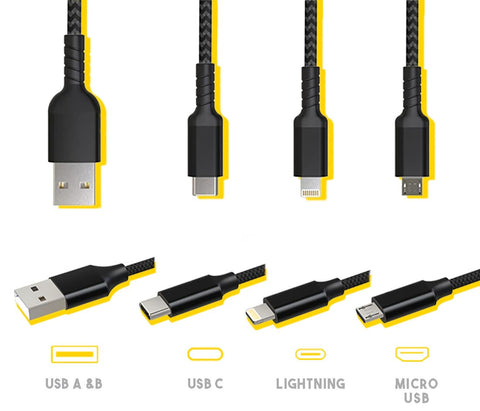
Some points of attention:
1. When using a solar panel without a built-in battery, it is very strongly recommended to charge an external battery with the solar panel and then charge your phone with the same external battery.
Why charge an external battery rather than your phone directly on the solar panel?
The power generated by the solar panel in the sun is not uniform due to radiation variations, clouds, movement of the panel on a backpack, shade. A phone directly connected to the solar panel may "refuse" the irregular charge to protect itself and thus block the charge. Either temporarily, or until the USB cable is unplugged and plugged back into the phone. To avoid losing all the energy generated in the sun during these moments of blocking, it is better to connect an external battery to the solar panel. This is because powerbank regulation systems are less advanced and also accept irregular charges. This does not cause damage to the external battery, which resists well to these on/off charges.
The smaller the power of the solar panel, the more this blocking phenomenon will be amplified.
2. Some new phones tend to require more input current than is standard. This is still rare, however. Some OnePlus smartphones, for example.
These smartphones, requiring a large input current (>3A), can block powerbanks providing a maximum of 1A or 2.4A. These are equipped with a charge protection system that blocks their charge or discharge if it is too high compared to the internal characteristics of the powerbank and they fail to regulate the charge. The Photon, whose internal battery provides a maximum power of 12 Watts (5V/2.4A), can exceptionally refuse the charge of a phone too greedy in energy. But rest assured, this only happens very rarely.
- Charge your laptop with a solar charger or solar battery
To enable the charging of a laptop, it is imperative to find out the internal electrical characteristics of the laptop in question. These characteristics, especially the power supply voltage, are informed on the laptop's power adapter. A laptop usually supports a supply voltage ranging from 18V to 22V. Each laptop also requires a specific connector for the power supply. Some examples are USB-C for newer computers, but also ... for most HP computers, ... for LENOVO, ... for ASUS.
To charge a laptop with a solar panel, it is essential to have a external computer battery - suitable power cable - solar panel.
The choice of the right external battery as well as the right power cable is therefore crucial. We invite you to read this article on choosing a portable laptop battery for more information. Sunslice powerbanks available for charging laptops are the Gravity 45, the Gravity 100 and the Gravity 500.
Please note, most computers come with a standard charger for mains charging (wall socket), but it is usually possible to order a suitable cable with USB-C input and output connector adapted to your computer on our site. The USB-C input can then be inserted into the Gravity 100, allowing for an easy and compact portable charging solution.

- Charging an external battery with a solar charger or solar battery
All solar or non-solar chargers from the Sunslice collection, are compatible with all powerbanks available on the market. The only requirement is that the external battery to be charged has a USB input (micro-USB, USB-C, Lightning, mini-USB, ...) accepting a standard 5V input voltage charge. And that you have a suitable USB cable. Cables USB-A to micro-USB, USB-A to USB-C, USB-A to Lightning and USB-C to USB-C, are also available on our website by clicking here.
An external battery is very useful in case you want to store the energy produced by the sun. As mentioned in the previous point, using an external battery as an intermediary between the solar panel and a smartphone, allows a more regular and therefore more efficient charging of the smartphone.
Is it worth buying a solar battery to charge an external battery? Yes to increase the storage capacity. Indeed, the solar battery, already having a built-in battery, automatically stores the energy produced by the solar battery in the sun. When this internal battery is charged, no more energy can be stored. Connecting an external battery to it then transfers the energy stored in the solar battery's built-in battery to the external battery and thus allows its solar charger to continue producing and storing energy.
- Charge a tablet (iPad, Kindle, Android) with a solar charger or solar battery
All tablets with a micro-USB, Ligthning or USB-C input can be charged by the Photon and other solar panels and powerbanks from Sunslice. As with smartphones, it is best to have an intermediate powerbank (Gravity 5, 10, 20, 45, 100) when charging with our Fusion solar panels.
The universal 3-in-1 cable does not allow for charging an iPad tablet (Apple brand). In this case, you need to use your own cable or order a Lightning cable on our site, available in 2 lengths: 1m and 20 cm.
- Charger une GoPro ou petit appareil photo avec un chargeur solaire ou une batterie solaire
Les GoPro peuvent être chargés par tous les chargeurs proposés par Sunslice. Également certains petite appareils photos et caméra nécessitant une tension d’alimentation de 5V.
Dans le doute, vérifiez le port d’alimentation de votre caméra. Si celui-ci est un micro-USB, alors c’est d’office compatible avec tous les produits Sunslice. Dans le cas où il s’agit d’un mini-USB ou USB-C, vérifiez la tension d’alimentation (sur le transfo). Si celle-ci est supérieure à 5V, seules les Gravity 45, 100 et 500 seront compatibles. Également le Hadron.

- Charger une manette Nintendo switch avec un chargeur solaire ou une batterie solaire
Nintendo switch controllers, as well as the majority of classic consoles, can be charged via their USB-C or micro-USB input port. All of our powerbanks as well as solar panels can generally charge these game consoles. However, please check in the user manual or on the transformer if the input voltage is 5V or less. If this exceeds 5V (exceptional cases), then only the Gravity 45, Gravity 100 and Gravity 500 will be compatible. Also the powerbank Hadron hybrid charger. Feel free to contact us if you have any questions, sending us a picture of your powerbank (the transfo) and the USB cable used for charging.
- Charge an Apple Watch / Garmin or other connected watch with a solar charger or solar battery
All connected watches can be charged with the Sunslice range of chargers. Simply take the USB cable provided in the box of your smartwatch, plug it into the USB port of our powerbanks, solar batteries and solar panels and then plug the USB into the charging device of your connected watch.
- Charge iPod, iTouch with solar charger or solar battery
Ipods, iPods Nano, iPod Shuffle, iTouch, etc. can all be charged with lsolar batteries. You just need to get the original USB cable and insert it into the Sunslice powerbank.
- Charge a portable fridge with a solar charger or solar battery
Portable fridges are appliances that require a lot of charging power. Few powerbanks allow for their charging. The Gravity 500 nevertheless, allows a charging power of 300W and that can show up to 500W. Thanks to its 2 standard European AC outlets, it allows charging of portable fridges as well as a multitude of products requiring an AC outlet on the mains. The Gravity 500 can be charged in the sun thanks to the solar panel Fusion 100W also available on our website. Feel free to contact us for more information about the Gravity 500 with AC and DC outlets.
- Charge a TV with a solar charger or solar battery
As with portable fridges, the Gravity 500 can be an ideal solution for charging a TV in your van or motorhome. Connected to the Fusion 100W, this solar pack is compact, powerful and relatively light with a great charging speed in the sun. Feel free to contact us for more information on the Gravity 500 - Fusion 100W solar pack. The Gravity 500 and the Fusion 100 are also available separately.
- Tesla Charger/Electric Car
Sunslice does not yet have electric car chargers in its energy anywhere . Be sure to check back in a few months, you never know!
- I need an AC mains plug to charge my device, what to do?
In case the charger of the device you want to charge can only be inserted into an AC outlet (wall socket), you will only know how to use the Gravity 500 battery that has AC outlets. In the case of small devices with relatively low power (maximum 100W), there are often adapted cables that also allow the Gravity 100 to be used. As mentioned above, most computers come with a standard charger for mains charging (wall socket), but it is usually possible to order a suitable cable with USB-C input and output connector adapted to your computer on our site. The USB-C input can then be inserted into the Gravity 100, allowing for an easy and compact portable charging solution.
Other experts are also talking about Sunslice by comparing our products. Visit their site:
- www.cliquecamping.com :☀️ Best Solar Portable Charger 2021
- bestregardsfromfar.com : : How to Choose your Solar Panels & Power-Banks for Traveling and the Outdoors


